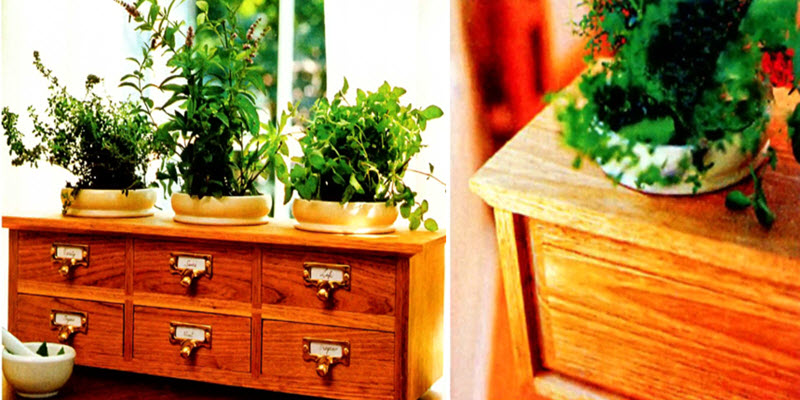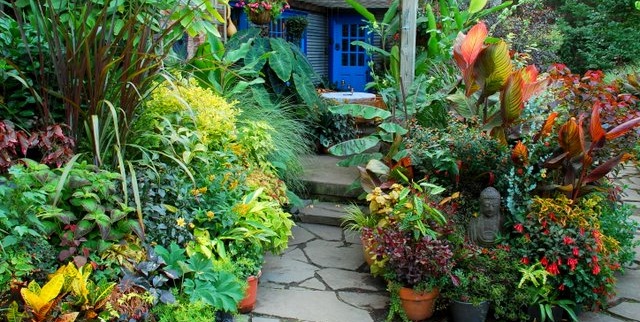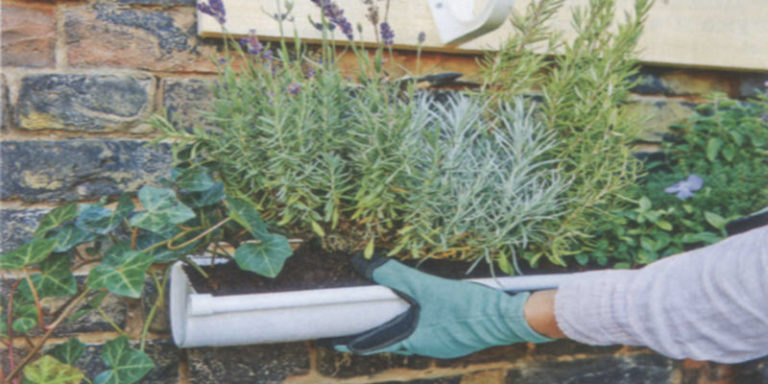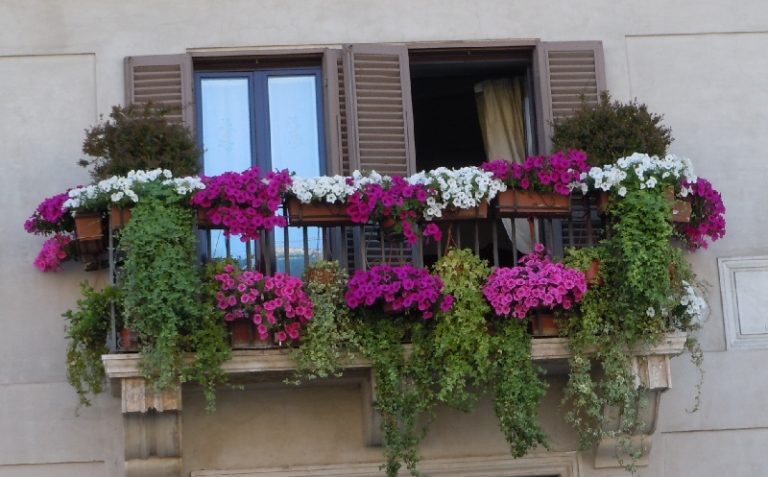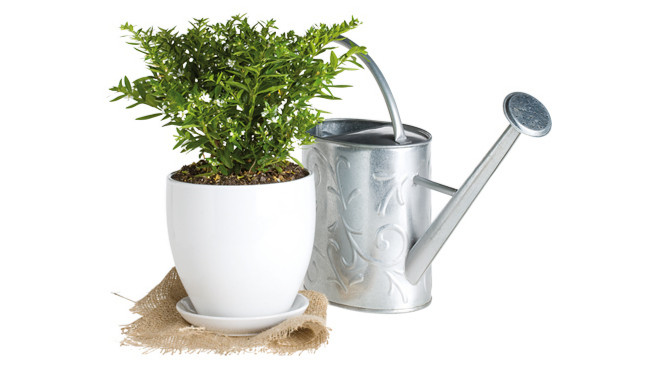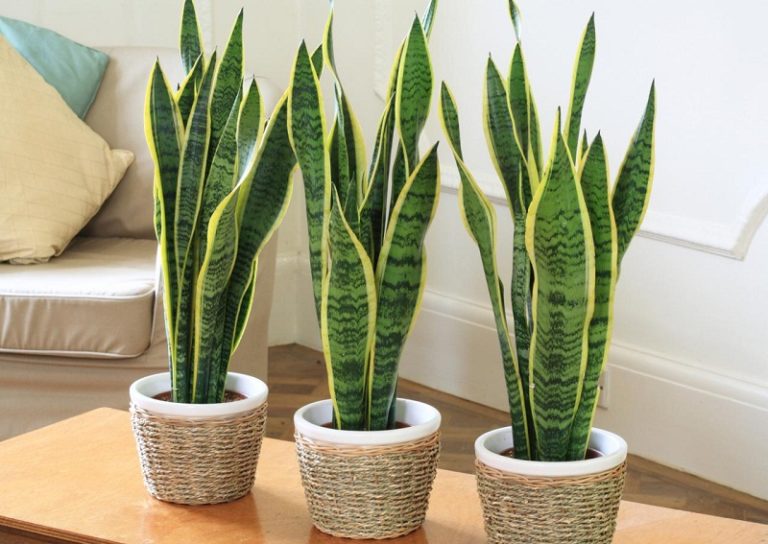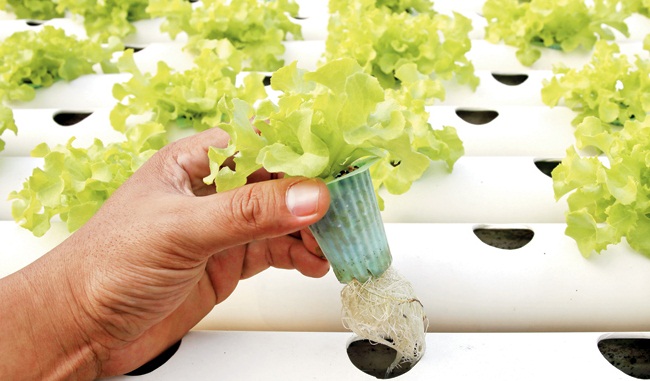Greenery – summer and winter
Greens complement meat and fish very significantly. The shelf made to hold these plants is able to provide you with seasonings throughout the year.
It can accommodate three pots with a diameter of 100 mm, which can be easily removed for watering and transplanting plants. Three drawers are designed for tools and storage of dried greens. It is recommended to make a shelf from gray California walnut wood – it is food safe and also has a direct direction of fibers. But you can be content with plywood and pine – the surfaces will be treated equally.
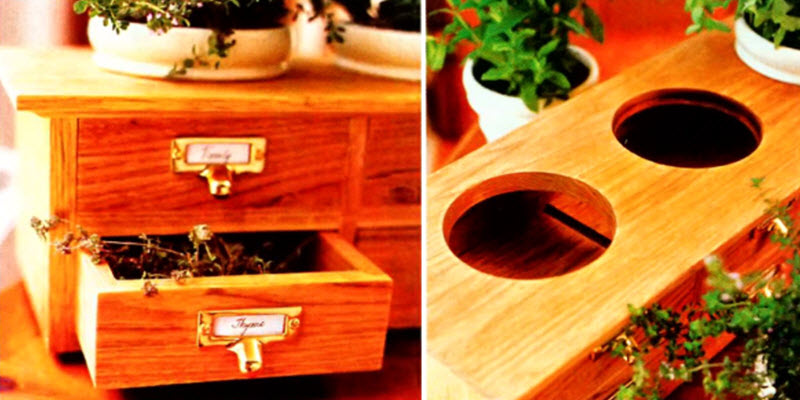
The removable back panel allows you to take care of the plants. The inscriptions on the drawers will help not to confuse the contents stored in them. The dimensions of the shelf are determined by the size of standard pots – Ø 100-115 mm.
According to the specified dimensions, the bottom 1 (525×187 mm) is cut out of a board or plywood 12 mm thick. Grooves are made for the inner walls (12×6 mm), under the back wall (6×6 mm) and for dowels (insert spikes), which connect the bottom to the outer side walls.
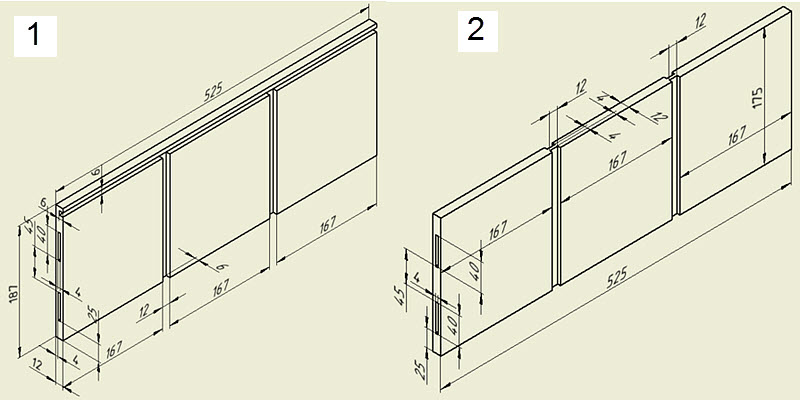
Next, shelf 2 is made, made of wood 12 mm thick (525×187), also, along with grooves for the walls and dowels.
Next, cut the middle (upper – 50×90, lower – 175×90) from wood 12 mm thick, and side (left 3 and right 4) walls from 20 mm wood. In the side walls, appropriate grooves are made for dowels and under the back wall.
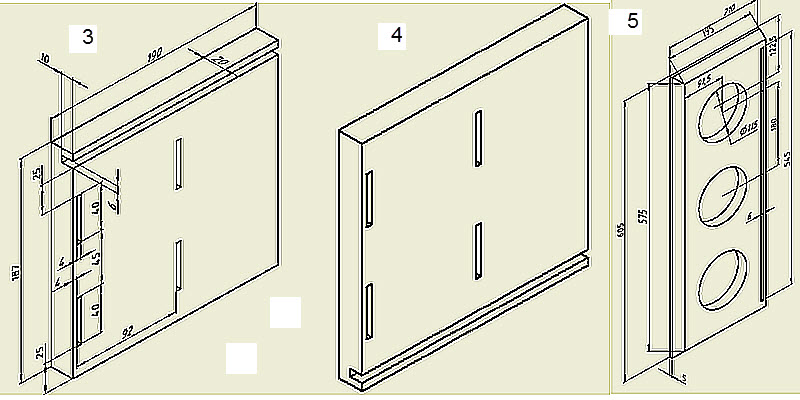
The back panel (removable) is cut out of plywood 6 mm thick, dimensions – 545×194 mm.
The tabletop-lid-shelf of the table, made of wood 20 mm thick, is also removable, in which three holes with a diameter of 115 mm are cut, a groove for the back panel is three chamfers 15×15 mm for aesthetics and ease of use. Chamfers, for example, on a tabletop-lid (15×15) are made on a milling machine with a cutter for volumetric panels.
It remains to make three drawers and three false panels to access the pallets under the pots.
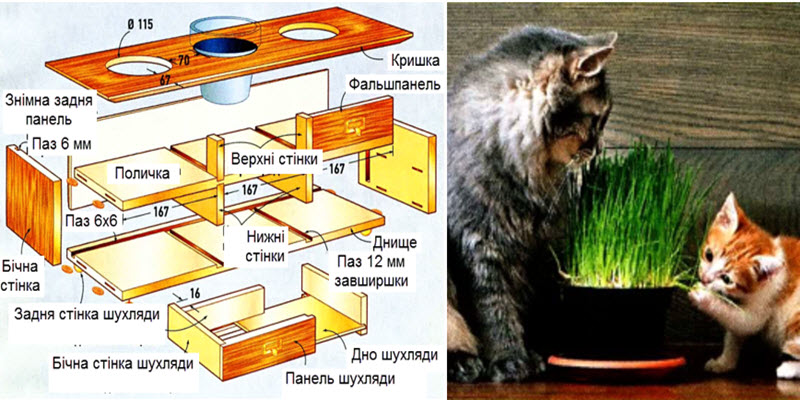
The bottoms of the drawers are made of plywood with a thickness of 6 mm, the side and back walls of the drawers are made of a 12 mm board, and the front panels of the drawers and upper false panels are made of 20 mm boards.
At the ends of the front panels of the drawers, a quarter of the side walls with a thickness of 12 mm is milled. Next, grooves of 6 mm are made on all walls of the drawers for the bottom. The side walls of the drawer protrude 16 mm beyond the back wall, so they do not fall out of the shelf in a fully extended position.
Next, everything is put into one block, glued (except for the back panel), and drawers are also glued. The upper false panels are held on magnetic latches, so their position should be adjusted. When removed, false panels give access to pallets under flowerpots with plants.
All parts should be treated with marrel peel (from the 120th to the 180th). For decoration, oil-based polyurethane, linseed drying oil and mineral alcohol are mixed in equal proportions and this mixture is applied in three layers, each time waiting to dry. Next, they attach handles with signs for plants, legs in the form of furniture wheels and begin to go after the seeds.
The optimum temperature for growing greens is 16-20 degrees. Basil, watercress, chives, and cilantro are great sets for growing in small areas. The same applies to dill, parsley, marjoram. Of the aromatic plants, you can also choose thyme, oregano and mint, as they are fairly compact plants that do not require special care.
When harvesting, the main caveat is to cut off no more than a third of the stem. Exception for cilantro – after cutting, it does not grow back a second time.
To preserve the taste and aroma of greens as much as possible, they are stored in dried containers without access to air and light and heat sources.
Lavender comes in pink, purple, white, and even yellow.

